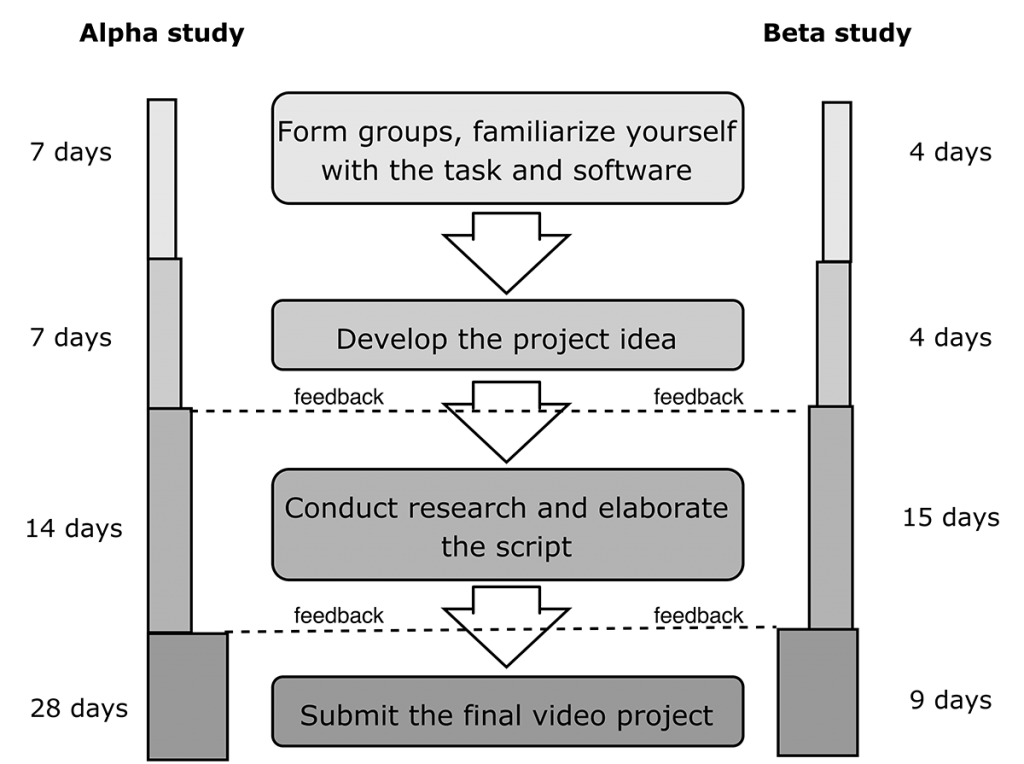Encouraging social science students to create short video stories on compelling academic topics is an effective way to involve them the pedagogic process, write Gibrán Cruz-Martínez and Aleksandra Lazareva
Collaborative learning using modern tech results in better knowledge retention. In the 21st century, it is crucial that students learn to collaborate, to participate actively, to be critical and creative, and to harness technology to improve their learning outcomes. Amid the unexpected shift towards online university teaching during the current pandemic, learning such skills never been more important.
While higher education students are familiar with a vast array of technology, they may not have used it in the classroom. Incorporating such tech into a collaborative learning environnment engages students more fully with the material they are expected to learn.
Our study of the pedagogical benefits of video storytelling shows that students find this format less stressful than, say, making a PowerPoint presentation. It's a creative way to approach learning that allows students to express their perspectives freely and confidently.
Our project asked small groups of 3–5 students to create a 3–5 minute research video on a chosen subject relating to a course topic, eg (post)colonial history, social policy, alternatives to development, electoral studies, social stratification, gender.

Why are video projects such a good tool for engaging students? Creativity, innovation and fun are the three aspects most frequently highlighted.
Digital storytelling opens up many creative ways to approach a task. Students could, for example, present their research findings as a simulated newscast, as an interview with key representatives such as politicians or heads of supranational institutions. Alternatively, they could narrate their story over images or film.
One group of students, for example, researched the political organisation of the pre-Columbian Inca empire. They combined animated doodle video with role-plays using background images of ancient Peru.
Another group examined socioeconomic and political factors of the crisis in Maduro's Venezuela. They role-play a newscast in which the anchor presents the context of the crisis, a reporter conducts simulated interviews with residents, and scholars offer insights and reflections based on their research.
For students, creating a video is an interesting and original way to express their opinions. One we interviewed held that 'through this format, we have way more instruments such as music, subtitles, videos, which we can use in order to communicate emotions, and it is always the best way to make people pay attention to what you are presenting... everyone has chosen a subject that they like which necessarily makes them more involved in the project.'
'...we have way more instruments such as music, subtitles, and videos we can use to communicate emotions, and it is always the best way to make people pay attention to what you are presenting'
video project student
Students in our study had mainly positive experiences working with their classmates. They found the assignment more fun than making a typical PowerPoint presentation.
Digital storytelling has a positive impact on students’ cognitive engagement because they can express their perspectives more confidently. 'We can describe the topic more closely', argues one, 'because during the presentation it can happen that because of the stress, our explanation is not so understandable and sometimes some important things are forgotten'.
Working on a video, and constructing a story, makes students work harder on formulating and honing their argument. They also seem to find it less stressful than doing a presentation in front of the class.
The digital storytelling project has a number of potential pedagogical benefits.
Students can prepare and finesse their research before subjecting it to critical assessment by their peers. They can present their results without the fear or stress of talking in front of the class on a sensitive research topic.
Students' increased emotional engagement could improve their grasp of abstract concepts and theories.
Rather than being a one-way educational experience, the video project makes students active participants in the learning process.
Groups of collaborating students don't have to be in the same room at the same time. Video storytelling projects bridge the digital divide between face-to-face and distance learning.
Visual output enables students to share their research with the world. Provided they comply with copyright permissions, videos could be posted on YouTube, Vimeo and similar video-sharing platforms.
To communicate effectively in the modern age, we must learn to collaborate, to find and critically evaluate information, to interpret messages from a global perspective, and, importantly, to use technology to improve learning and performance.
A collaborative digital storytelling project teaches multiple components of the 21st century skill set, and has immense potential to contribute to students’ intellectual development and acquisition of skills in an engaging, creative and fun way.